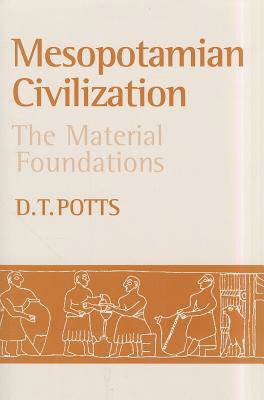
- Afhalen na 1 uur in een winkel met voorraad
- Gratis thuislevering in België vanaf € 30
- Ruim aanbod met 7 miljoen producten
- Afhalen na 1 uur in een winkel met voorraad
- Gratis thuislevering in België vanaf € 30
- Ruim aanbod met 7 miljoen producten
Omschrijving
The best way to achieve an understanding of the art, architecture, history, and literature of a great civilization such as Mesopotamia's, D. T. Potts believes, is through an analysis of its material infrastructure. Concentrating on Southern Mesopotamia and relying preponderantly on evidence from the third millennium B.C., Potts describes a civilization from the ground up. He creates an ethnography of ancient Mesopotamia which combines knowledge of its material culture and its mental culture.
The creation and development of Mesopotamia was made possible by the Tigris and Euphrates Rivers. "None of the achievements of Mesopotamian production in the realm of agriculture, animal husbandry, or related industries (textiles, leather working, boat building)," Potts says, "can be understood except in reference to the very specific river regimes and soil conditions of the alluvium." Potts examines the climate, the landforms, and other conditions that enabled the area to become populated.
What natural resources did the earliest Mesopotamians have at their disposal? How did Mesopotamian religious ideals reflect the basic conditions of life in the alluvial plain of Southern Mesopotamia? What contributions to Mesopotamian civilization came from the East and what from the West? In addressing such questions as these, Potts offers a new foundation for understanding an ancient civilization of great complexity.
Specificaties
Betrokkenen
- Auteur(s):
- Uitgeverij:
Inhoud
- Aantal bladzijden:
- 340
- Taal:
- Engels
Eigenschappen
- Productcode (EAN):
- 9780801433399
- Verschijningsdatum:
- 15/02/1997
- Uitvoering:
- Hardcover
- Formaat:
- Genaaid
- Afmetingen:
- 155 mm x 239 mm
- Gewicht:
- 748 g

Alleen bij Standaard Boekhandel
Beoordelingen
We publiceren alleen reviews die voldoen aan de voorwaarden voor reviews. Bekijk onze voorwaarden voor reviews.











